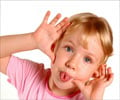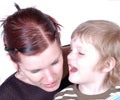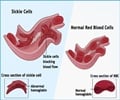- Learn more about Autism Speaks - (https://www.autismspeaks.org/)
- Brandler, William M. et al. Frequency and Complexity of De Novo Structural Mutation in Autism. The American Journal of Human Genetics , Volume 98 , Issue 4 , 667 - 679.
- Michael Ronemus, Ivan Iossifov, Dan Levy & Michael Wigler. The role of de novo mutations in the genetics of autism spectrum disorders. Nature Reviews Genetics 15, 133–141 (2014).
- Autism Spectrum Disorder - (https://medlineplus.gov/autismspectrumdisorder.html)
- Tang G, Gudsnuk K, Kuo SH, Cotrina ML, Rosoklija G, Sosunov A, Sonders MS, Kanter E, Castagna C, Yamamoto A, Yue Z, Arancio O, Peterson BS, Champagne F, Dwork AJ, Goldman J, Sulzer D. Loss of mTOR-dependent macroautophagy causes autistic-like synaptic pruning deficits. Neuron. 2014 Sep 3;83(5):1131-43.
- Autism - (https://en.wikipedia.org/wiki/autism)
- About Autism - (http://www.autism.org.uk/)
- Wolff JJ, Gu H, Gerig G, Elison JT, Styner M, Gouttard S, Botteron KN, Dager SR, Dawson G, Estes AM, Evans AC, Hazlett HC, Kostopoulos P, McKinstry RC, Paterson SJ, Schultz RT, Zwaigenbaum L, Piven J; IBIS Network. Differences in white matter fiber tract development present from 6 to 24 months in infants with autism. Am J Psychiatry. 2012 Jun;169(6):589-600.
- Somer Dawson, Emma J. Glasson, Glenys Dixon, and Carol Bower. Birth Defects in Children With Autism Spectrum Disorders: A Population-based, Nested Case-Control Study. Am. J. Epidemiol. (2009) 169 (11): 1296-1303.
- Information About Autism spectrum disorders - (http://www.mayoclinic.org/diseases-conditions/autism-spectrum-disorder/basics/definition/con-20021148)
- Autism Spectrum Disorder Definition - (https://www.nimh.nih.gov/health/topics/autism-spectrum-disorders-asd/index.shtml?utm_source=rss_readersutm_medium=rssutm_campaign=rss_full)
- Autism Spectrum Disorder (ASD): Overview - (https://www.nichd.nih.gov/health/topics/autism/pages/default.aspx)
- Autism Society - (http://www.autism-society.org/)
- Frequently Asked Questions about Autism - (https://bbrfoundation.org/frequently-asked-questions-about-autism)
What is Autism?
Autism is a neurodevelopmental disorder that typically appears during the first two years of life. It affects the brain's normal development of social and communication skills.
This article focuses on autistic disorder or classic autism.
Autism results due to a neurological disorder that affects the normal brain function. There is no single cause known for autism.

As compared to a normal child, autistic children do not reach the developmental milestones like crawling, walking or saying the first word on time. Autistic children are not slow learners or of a lesser intelligence quotient (IQ).
Instead, they are very special children who have difficulty in communication and social interaction. They often come across as those who remain engrossed with restricted and repetitive behavior patterns. No two people with autism will have exactly the same symptoms. Therefore, health care providers think of autism as a ‘spectrum’ disorder.
Autism lasts a lifetime. It begins in childhood and persists into adolescence and adulthood. Some may be able to live independent and productive lives while others might have severe disabilities and require life-long care and support.
There is no cure, but there are quite a few treatment options available for autistic children. Psychosocial interventions include behavior and communication therapies and medicines to control symptoms. Early treatment can be beneficial to autistic children and can make their life much easier and help them become self-reliant.
Children with mild autism may be integrated into the general society with treatment and guidance. But most people with autism are often subjected to stigma, discrimination and human rights violation. Globally they lack adequate services and support systems. Thus interventions have to be combined with broader actions that would include them in mainstream society.
Facts and Statistics on Autism
- Autism spectrum disorder (ASD) occurs in 1 in 160 children worldwide.
- This estimate is an average and is on the lower side. Some controlled studies predict higher numbers.
- Prevalence in many low-and middle-countries is still unknown.
- The Centre for Disease Control and Prevention (CDC) reports 1 in 68 children in the United States to have autism-related disorders. This has increased compared to a number of 1 in 88 kids in 2012.
- It is estimated that prevalence is increasing globally due to awareness, better diagnostic tools and criteria and better reporting.
What are the Causes of Autism?
There is no single cause for autism. Most cases involve a complex and variable combination of genetic risks and environmental factors that influence early child development.
Genetics: That autism disorder has a genetic basis is evident due to a pattern of autism in many families.
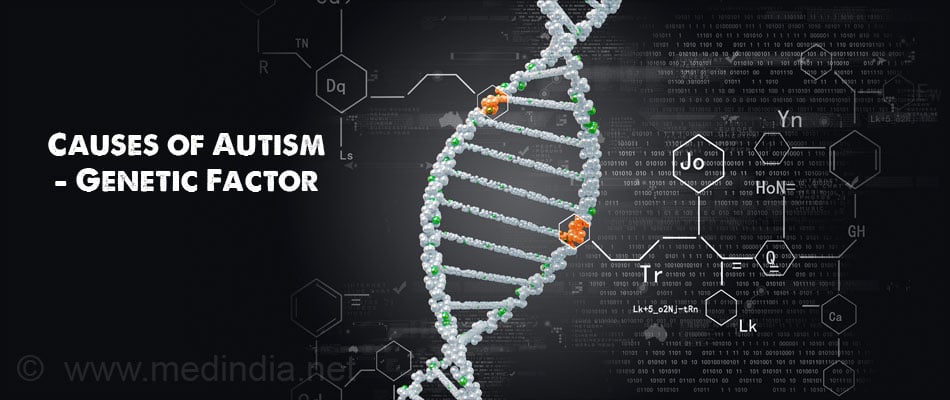
Around 100 genes have been identified that are related to autism and around 60 genes have more than a 90% chance of contributing to autism.
A number of rare gene changes or mutations have also been associated with autism. These gene changes termed de novo mutations or new mutations appear spontaneously in sporadic cases where there is no family history of autism. They contribute to the risk of the disease.
According to a study conducted in California and published in the journal “Cell”, de novo mutations mostly thought of as spelling mistakes that change a single letter of the DNA code are now believed to be actually structural variants where there are insertions or deletions of entire words or sequences of the DNA code. The rate at which these mutations occur is at a surprisingly high level of 20%.
The study says that autistic children do not seem to have more mutations compared to neurotypical children but the mutations present in them are more likely to disrupt genes that are involved in brain development.
Epigenetic Factors: In the presence of a genetic predisposition to autism, influences by epigenetic factors (non-genetic or environmental in nature) can increase a child’s risk to autism. Nutrition, drugs and mental stress are some of the epigenetic factors.
Epigenetic changes occur when the bases in the DNA are modified rather than its sequence.
Research is still going on to find out more about the risk factors that can increase the chance of a baby being born with autistic disorder.
Some of these factors include -
- Diet
- Exposure to pesticides and phthalates
- Drugs like terbutaline to stop premature birth
- Valproic acid used to control seizures
- Antipsychotics and mood stabilizers
- Mercury poisoning
- Inability of the body to make proper use of vitamins and minerals
- Vaccine sensitivity owing to thimerosal that is a common preservative in multi-dose vaccines.
According to a research report in American Journal of Epidemiology, some possible causes of autism are related to the process of birth and related environment such as:
- Breech position of the baby or difficulties in delivery that might reduce oxygen supply to baby’s brain
- Low Apgar score (Apgar score is the index used to assess the condition of a newborn at birth and at five minutes after birth.)
- Parental history of schizophrenia or similar forms of psychosis, depression, and bipolar disorder
- Advanced parental age at the time of conception
- Maternal illness during pregnancy
Complex Link Between Autism and PTSD
- Heightened Sensitivity to Stress
- Social Vulnerability
- Communication Barriers
- Sensory Sensitivities
- Neurobiological Factors
- Misinterpretation of Social Cues
- Overlap in Symptomatology
- Environmental Factors

What are the Symptoms of Autism?
Children suffering from autism are affected in three ways -
1. Communication problem with their parents and people around them
Problems in communication are one of the key symptoms of autistic children.
- They talk very less. The level of communication varies with each child. Some children remain mute for life.
- They are slow in picking up language skills. It may be as late as 5 or 6 years of age.
- Autistic children may speak using only a word or two to form a sentence, or be monosyllabic. At times, they may simply repeat the words that are being said to them.
- They find it difficult to understand the cues of conversation and the nuances of how communication bounces back to and fro from a set of participants.
2. Problems with Social Interaction
- Autistic children have problems with social interactions.
- They cannot make new friends.
- The children remain withdrawn and do not play interactive games.
- They avoid eye contact or may not respond to eye contact or smiles.
- They prefer to spend time alone.
- They exhibit lack of empathy.
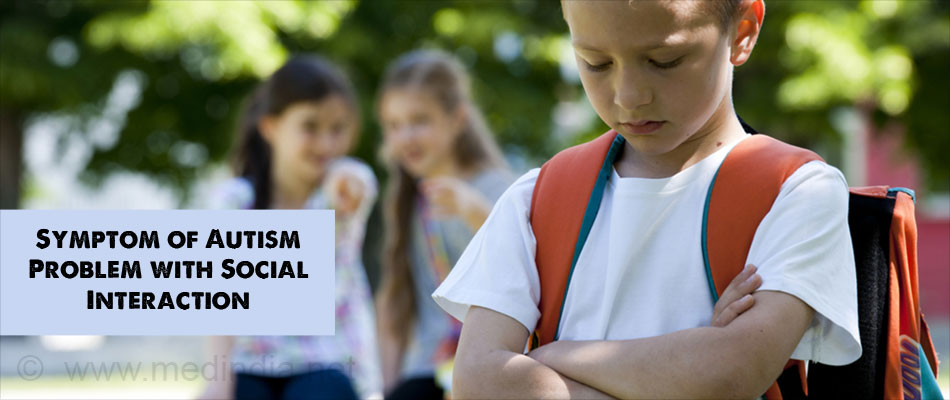
3. Repetitive Behavior
Repetitive behavior is also an integral part of the world of autistic children.
- They get stuck at a single play or topic. Autistic children can spend hours lining up cars or objects, or get engrossed in a particular type of behavior involving any object.
- Autistic children get upset if anyone disturbs their work, accidentally or otherwise. Their world moves in a set pattern and anything that disturbs the pattern upsets them. Even their daily routines need to be followed in exactly the same manner.
- They exhibit repetitive body movements.
How Do You Diagnose Autism?
Diagnosis is important for autistic children, because the earlier they are diagnosed, their chances of improvement and blending into the general society remain higher.
Early treatment can bring enormous beneficial effect on autistic children. Yet only about 50% of the autistic children in the preschool age are diagnosed on time.
Early Diagnosis: Autism is evaluated by the behavioral characteristics of the children. Children below the age of three may be diagnosed as autistic if they have one or more impairments in the area of communication, socialization, or restricted behavior. This is diagnosed during the baby checkups in the first two years of life. The Center for Disease Control and Prevention (CDC) recommends a screening test also if the child has siblings or other family members with autism or are born preterm or with a low birth weight.
Some possible ways to identify autism is if the child does not -
- Babble or baby talk by 12 months
- Point out things by the end of first year.
- Utter a word by the middle of the second year.
- Speak two-word sentences by the end of two years
- Respond to their own name
- Make eye contact
- Interact socially
- Play with toys
- Laugh or smile
Once diagnosed with autism, additional evaluation has to be done by health specialists as there is no biological test for diagnosing autism. Specialists like a developmental pediatrician, a child psychologist or psychiatrist or a speech-language pathologist can assess cognitive and language abilities and age appropriate skills needed to perform daily self chores.
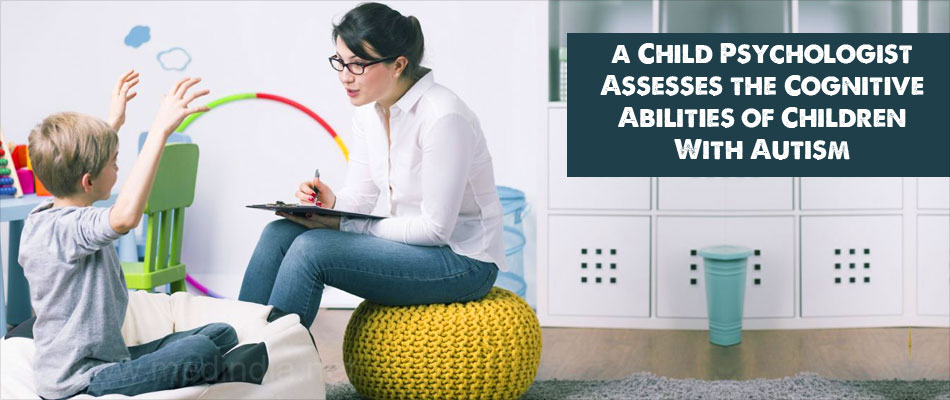
Late Diagnosis: Sometimes signs of autism are missed when younger. They may be diagnosed later when
- Older children have difficulties in subtle communication and have trouble understanding sarcastic tones or humor.
- Adults realize they are socially withdrawn and verbally challenged.
How Do You Treat Autism?
Autism cannot be treated by drugs but a combination of various interventions may be used to get the maximum benefit for an autistic child.
Interventions commonly practiced are the following:
1. Behavioral programs address social skills, attention, sleep, play, anxiety, parent interaction and challenging behaviors. Applied behavioral analysis (ABA) is the basis of behavioral therapy that tracks a child’s progress in improving his skill.
Lovaas Method
The Lovaas method was developed by Ivar Lovaas, Ph.D., at the UCLA Clinic for the Behavioral Treatment of Children. This is a behavior modification therapy which works with some children. This takes one-to-one interactions for about 40 hours a week. It is also known as Discrete Trial Teaching (DTT) and teaches skills in a controlled step-by-step way.
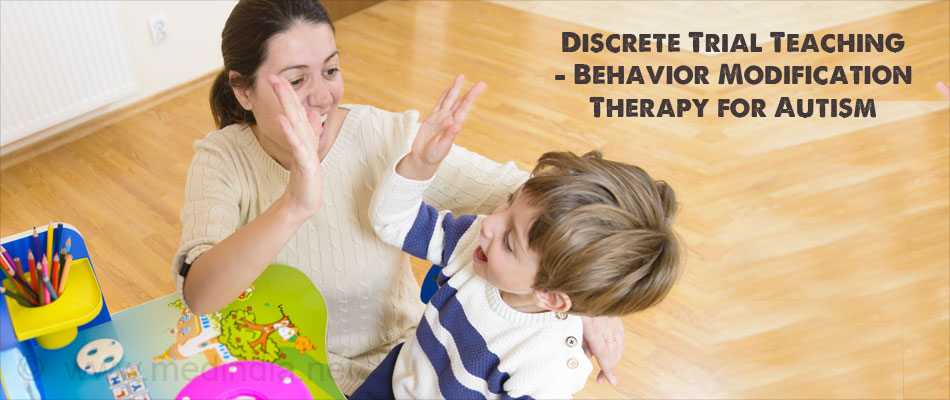
2. Education and Learning Programs:
TEACCH: Treatment and Education of Autistic and related Communication Handicapped Children
TEACCH is not a learning aid, rather it is a behavior management program designed to integrate predictable behavior for an appropriate social situation in an autistic child. This helps the child learn the skills necessary for self-care. The program uses structured learning methods to teach behavior modifications. This increases the child's affinity for routines and rituals that keeps them happy, but leaves little scope for the child to accept transitions and changes. The method works quite well with low functioning autistic children.
3. Medications:
Medications to a certain extent will be able to help relieve the symptoms of the autistic child in controlling behavior and other expressions of the disorder but not the cause. With medications, the parents may find it easier to handle their autistic children.
- Antipsychotics like risperidone and aripiprazole should be used only in children with severe symptoms as they have intense side effects. They help reduce emotional distress, aggression, hyperactivity and self-injury.
- Selective serotonin-reuptake inhibitors or antidepressants like fluoxetine and citalopram.
- Stimulants and other hyperactivity drugs like methylphenidate, guanfacine and a combination of amphetamine and dextroamphetamine.
- Chelation therapy that uses substances to remove heavy metals from the body when they are considered to be the cause.
4. Other Treatments and Therapies:
Sensory Integration Therapy
In this process, children are made aware of their senses like rolling, swinging, jumping and spinning by physically experiencing them. This is done by special therapists who are trained to use such methods.
Play Therapy
The therapist plays with the child and lets the child guide the sessions. The aim is to help the child communicate and learn the everyday functions of daily life.
Music Therapy
This therapy uses music, including singing to music, playing instruments, and movements with music. This helps the children with developmental disabilities as it uses nonverbal interactions and facilitates play to encourage the children to socialize with others.
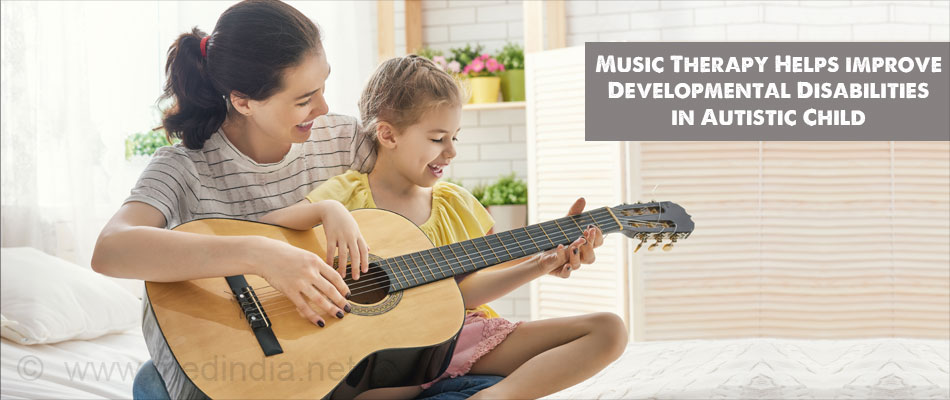
Picture Exchange Communication System (PECS)
This method is designed to increase communication skills. The training manual written by Lori Frost, MS and Dr. Andrew Bondy provides all the necessary information to implement PECS effectively.
Auditory Integration Training (AIT)
Originally meant as an intervention to cure deafness, this therapy tries to increase a person's sensitivity to distinguish sounds at different frequencies. For certain kinds of autism this therapy gives result especially in making such children lose some of their aversions to certain sounds.
What is the Prognosis for Autism?
Autism is a unique disorder that differs from child to child whose prognosis is influenced by the cause of the disease and the presence of any other condition present in the child.
While speech problems and other symptoms might reduce when older, the core problems like social interactions remain.
Some experts suggest that factors like
- An intelligent quotient (IQ) above 50
- Ability to speak before age six
- Having a useful skill
can help in a better outcome.
The prognosis for autistic individuals has vastly improved compared to 30 years ago due to the timing and the level of interventions. Some adults with autism work in mainstream jobs while others work in special environments supervised by managers trained to work with people with learning disabilities.
Communication and social interactions are the main difficulties they face all the way from home, to school and later at work. Hence they continuously need encouragement and moral support to help them lead independent lives.






